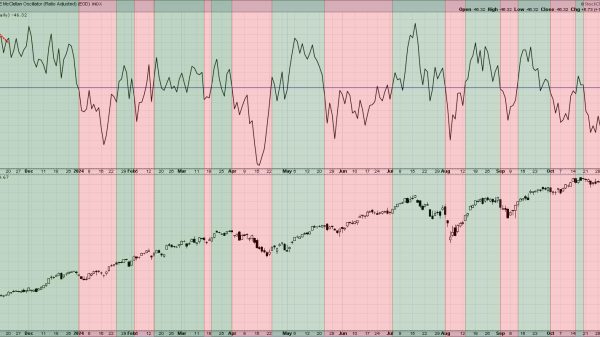Managing workloads efficiently is essential for businesses and individuals in today’s fast-paced digital landscape.
The ever-increasing demands of the digital world can be overwhelming, often leaving us feeling like we’re constantly chasing after lightning bolts. However, there’s a solution that can help you tame this digital storm and bring order to the chaos: the Conductor Platform.
What is the Conductor Platform?
The Conductor Platform is a cutting-edge software solution to streamline and optimize digital workflows. Whether you’re a business looking to improve productivity or an individual trying to keep up with your digital tasks, the Conductor Platform can be your guiding light in navigating the complexities of the digital realm.
Lightning-Fast Efficiency
One of the most significant advantages of the Conductor Platform is its ability to expedite tasks. Just as a conductor directs an orchestra precisely, this platform orchestrates your digital tasks seamlessly. It allows you to automate repetitive processes, reducing the time and effort required for manual work. With the Conductor Platform, you can harness the power of automation to complete tasks at lightning speed.
Streamlined Collaboration
In the digital age, collaboration is essential, but it can also be a source of confusion and miscommunication. The Conductor Platform acts as a unifying force, bringing together team members and facilitating effective collaboration. It provides a centralized hub where all project-related information is readily accessible, allowing team members to work in harmony, just like the instruments in an orchestra under the guidance of a conductor.
Reducing Information Overload
The digital world bombards us with information from all directions, making it challenging to filter out the noise and focus on what truly matters. The Conductor Platform assists you in managing this information overload by providing intelligent data organization and categorization. It ensures you receive only the information relevant to your tasks, minimizing distractions and keeping you on track.
Enhanced Decision-Making
In the digital realm, making informed decisions quickly is crucial. The Conductor Platform streamlines your workflow and empowers you with valuable insights. By analyzing data and generating reports, it helps you make data-driven decisions with confidence. Just as a conductor guides the orchestra to create beautiful music, the Conductor Platform guides you toward informed choices in your digital endeavors.
Scalability and Adaptability
The Conductor Platform can adapt as your digital workload evolves to meet your changing needs. It is highly scalable, accommodating both individual users and large organizations. Whether you’re a solo entrepreneur or part of a multinational corporation, the Conductor Platform can be customized to fit your unique requirements.
What is Workload Automation?
Workload automation is a crucial IT process that involves the scheduling, management, and execution of various tasks and processes within an organization’s computing environment. It encompasses the automation of repetitive and routine tasks, ensuring that they are executed efficiently and on time without manual intervention.
Key aspects of workload automation include:
Task Scheduling: Workload automation software allows organizations to schedule various tasks, from data backups and system maintenance to batch processing and report generation. This scheduling ensures critical operations are performed at the right time, optimizing resource utilization.
Dependency Management: Workload automation tools can manage dependencies between tasks, ensuring one task is executed only when its prerequisites are met. This reduces errors and ensures that processes run smoothly.
Notification and Alerting: Workload automation systems provide notifications and alerts to administrators when tasks encounter issues or fail to execute as planned, allowing for prompt intervention.
Resource Optimization: By automating resource allocation and de-allocation, workload automation helps organizations use their computing resources efficiently, improving overall system performance and reducing operational costs.
Reporting and Monitoring: These systems offer detailed reporting and monitoring capabilities, providing insights into task execution, resource usage, and performance metrics.
Why are Operational and Analytical Workloads Converging?
Operational and analytical workloads, historically distinct in data processing, converge due to several compelling factors. This convergence is reshaping the way businesses handle data and make informed decisions.
Real-time Decision-Making:
One of the primary drivers behind the convergence of operational and analytical workloads is the need for real-time decision-making. Organizations must react swiftly to changing conditions in today’s fast-paced business environment. Combining operational and analytical data allows for instant insights, enabling businesses to make informed decisions.
Data Integration:
Historically, operational and analytical data resided in separate silos, making gaining a comprehensive view of business operations challenging. Convergence eliminates these silos by integrating data sources, providing a holistic perspective. This integrated approach fosters a better understanding of how daily operations impact long-term goals.
Improved Customer Experiences:
The merging of operational and analytical data empowers businesses to personalize customer experiences better. Organizations can tailor their products and services to individual customer preferences by analyzing real-time operational data alongside historical analytical data, enhancing customer satisfaction and loyalty.
Enhanced Efficiency:
Convergence also drives efficiency. Instead of maintaining separate infrastructures for operational and analytical workloads, businesses can streamline their data architecture, reducing costs and complexity. This efficiency translates into faster data processing and more agile operations.
Competitive Advantage:
In today’s competitive landscape, data-driven insights are a significant competitive advantage. Converging operational and analytical workloads enables organizations to extract valuable insights from their data, gaining a deeper understanding of market trends, customer behavior, and operational efficiency.
Advanced Technologies:
Advancements in technology, such as in-memory computing, cloud computing, and data processing frameworks, have made converging operational and analytical workloads more feasible. These technologies provide the speed and scalability necessary to handle the combined demands of both types of workloads.
Regulatory Compliance:
Regulatory requirements, such as GDPR and CCPA, demand greater data transparency and control. Converging operational and analytical data makes it easier for organizations to track and audit data usage, ensuring compliance with these regulations.
Conclusion
The Conductor Platform stands as a beacon of control and efficiency in an era where digital demands can feel like lightning strikes. Its ability to automate tasks, streamline collaboration, reduce information overload, and enhance decision-making empowers individuals and businesses to thrive in the digital landscape.
Just as a conductor guides an orchestra to create a harmonious symphony, the Conductor Platform directs your digital workflow to create a symphony of productivity. Say goodbye to the chaos of the digital world and embrace the order and efficiency that the Conductor Platform brings to your work.
Read more:
Lightning the Digital Workload























